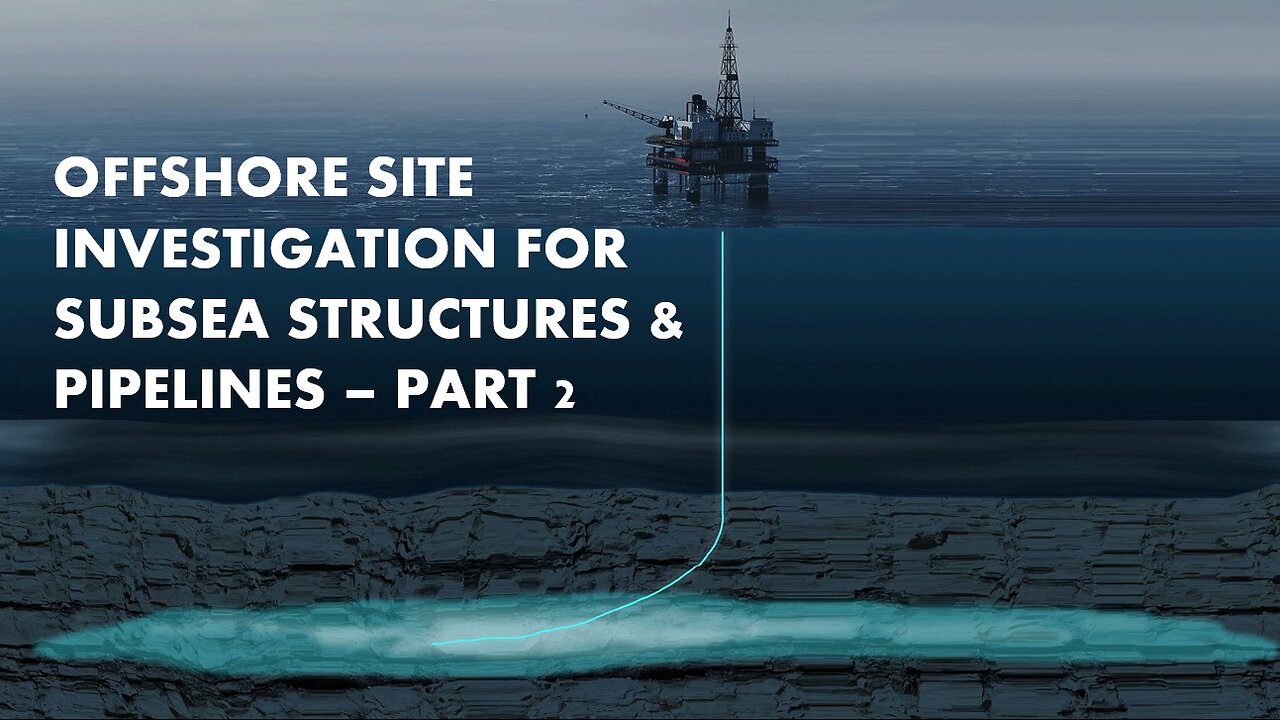Premium Only Content

Offshore Site Investigation for Subsea Structures & Pipelines - Part 2
The size of the project, the location of the project, the water depth and phase of the project would all be a large factor in defining an offshore S.I scope of work. Have you performed a risk assessment to define the main requirements of the S.I (where is your soils risk)?
If the schedule allows, the Geophysical S.I should be performed first as this will give an immediate indication of major issues (slopes, geohazards, rock outcrops, shallow gas) within the corridor of proposed subsea architecture installation.
Geotechnical sampling can then also be planned/targeted in areas of interest as identified from the preliminary geophysical interpretation. Are specifc cores required to allow a geohazard assessment to be performed?
When both geophysical and geotechnical data has been acquired it is vital that the data is integrated such that interpretation of geophysics is aided by the geotechnical ground truthing. This may take the form of a ground model and / or a fully integrated GIS suite of data.
Laboratory testing on Geotechnical samples should be planned in accordance with design requirements, thus it is key to identify the expected foundation solutions early in the project. Laboratory testing type or specification should be determined with specific foundation types in mind.
Undertaking the correct S.I for the project is critical for the mitigation of future risk for all parties involved and can lead to significant cost savings in design and thus fabrication / installation.
For full videos you can visit this link :
https://drive.google.com/file/d/12erc9zC5NaD0sos5FT218q7Jp4MTMPTg/view?usp=sharing
and you will be directed to a google drive link where you can download all files of this course
https://drive.google.com/file/d/1f-ATZbDYIc_sZFDNJ5WjpYE6zakEYUpn/view?usp=drive_link
-
 1:21:05
1:21:05
I_Came_With_Fire_Podcast
13 hours ago"Veteran Health, Military Culture, and American Exceptionalism" with Matt Kenney
12.8K7 -
 23:21
23:21
Simply Bitcoin
1 day ago $19.19 earned$1M Bitcoin in 2025? | Trump's Plan to End the Fed Revealed!
96.6K47 -
 17:19
17:19
SLS - Street League Skateboarding
17 days agoTop Moments from the Men’s Super Crown Final! Nyjah Huston, Giovanni Vianna and Gustavo Ribeiro 👑
52.5K -
 LIVE
LIVE
Major League Fishing
3 days agoLIVE! - Bass Pro Tour: Stage 1 - Day 3
851 watching -
 47:00
47:00
vinndoggradiousa
5 days agoBYE LEGACY MEDIA guest/ Sam Anthony of YourNews.com
5.7K -
 13:55
13:55
Clownfish TV
15 hours agoOrcs REMOVED from Dungeons & Dragons New Monster Manual?!
6.12K8 -
 15:38
15:38
Chris From The 740
6 hours ago $1.82 earnedThe EAA Girsan Match X 2311 : Premium Features, Unbeatable Value!
25.4K10 -
 14:23
14:23
Degenerate Jay
3 hours ago $0.25 earnedPeople Forgot What Metal Gear Solid Is?
13.6K5 -
 1:01:23
1:01:23
FamilyFriendlyGaming
17 hours ago $3.34 earnedCat Quest III Episode 14
30.4K -
 3:16:59
3:16:59
RG_GerkClan
6 hours ago🔴LIVE - Dominating One Raid at a Time - Escape From Tarkov - Gerk Clan
27.8K1